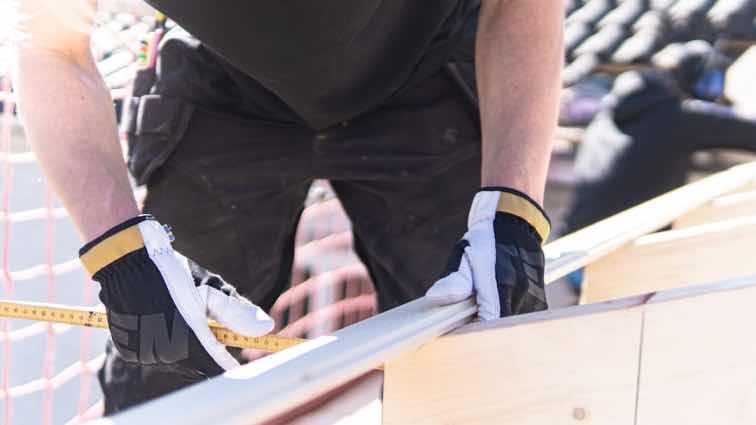In the architecture and construction sphere, much attention goes to the design phase and structural integrity of a project. While these aspects are unquestionably vital, it is the behind-the-scenes contributions that frequently determine whether a project runs smoothly. Among these unsung contributors are handyman services. Though often overlooked, their role is crucial in ensuring that architectural plans are executed with precision and functionality.
From project preparation to last-stage adjustments, handymen can help bridge the gap between blueprint and reality. Their flexibility, broad skill sets, and problem-solving mindset make them indispensable in both residential and commercial projects.
Bridging Design and Execution
Architects provide the vision, laying out the form and function of a space. General contractors and builders carry out large-scale work based on those plans. Yet, there are countless details that arise during the build process that do not fall under a contractor’s specialty. This is where handyman services come in.
Whether installing trim, correcting measurements, or adjusting framing to fit new features, these tasks require hands-on finesse and a close understanding of construction materials. Handymen can step in to handle minor repairs and modifications without causing delays in the overall timeline. Their ability to react quickly to on-site conditions ensures that the original architectural intent is preserved without sacrificing quality.
Helping With Site Preparation and Cleanup
Before major work begins, sites must be prepped, cleared, and readied for installation. Handyman crews often assist in the initial stages of project readiness. Removing old fixtures, leveling ground, adjusting door frames, or patching surfaces are all examples of tasks handled efficiently by an experienced handyman.
After major work is completed, they return to perform finish-level touches or restore areas that were disturbed in the building process. Tasks such as re-caulking, adjusting cabinetry, tightening fixtures, or resealing floors help the space transition from a construction zone to a livable environment. These finishing services complete the transformation and prepare the space for occupancy.
Supporting Remodeling and Adaptive Reuse
Architectural projects often involve more than new construction. When architects work on remodeling or adaptive reuse, they face the additional complexity of integrating modern systems with older structures. These projects often include unexpected repairs or layout changes that arise during demolition.
Handyman teams can step in immediately to repair framing, reframe openings, install reinforcements, or replace damaged components. These contributions allow the architectural vision to proceed without pausing for new subcontractors or creating scope creep.
It keeps the remodel in motion, particularly when tight deadlines are in place. In one example, clients working with Carolina Premier Handyman and similar companies noted how timely coordination during a commercial renovation allowed the architects to focus on code compliance and space flow while the handyman crew executed finish work in tandem. This collaborative approach reduced cost overruns and shortened project delivery time. These professionals added value by being available for both quick fixes and complex installation requests.
Ensuring Compliance and Accessibility
While an architect is responsible for meeting building codes and ADA compliance in the design stage, executing those details on site can fall to a skilled handyman. Installing grab bars, adjusting sink heights, creating access ramps, or widening doorways are just a few tasks that fall into their scope.
These changes require hands-on understanding of measurement, anchoring, and surface preparation. Mistakes in this area can lead to failed inspections or future legal complications. A reliable handyman partner ensures that these compliance features meet both functional needs and aesthetic standards.
Ongoing Maintenance and Project Longevity
Once a building is completed and occupied, the work is not truly over. Maintenance requests will arise, and spaces may require slight adaptations as users settle in. Rather than bringing in full-scale crews for minor repairs, many businesses and homeowners rely on their handyman service to maintain continuity.
This may include repairing wear and tear, adjusting cabinetry that has shifted, sealing cracks, or touching up finishes. These updates are often required within the first year of use and having a team familiar with the original work makes the process easier.
In larger commercial spaces, handyman services often handle tasks such as safety inspections, lighting replacement, and HVAC filter changes. Keeping a project functional supports the longevity of the design and keeps property managers focused on broader operations.
Enhancing Communication on the Job Site
Handymen frequently serve as a communication link between tradespeople, designers, and clients. Their ability to adapt to multiple roles makes them a point of contact when questions or challenges arise. Whether relaying messages from electricians to cabinet installers or helping clarify finish details, this presence boosts clarity and reduces scheduling conflicts.
Their familiarity with construction sequencing allows them to anticipate issues and offer timely suggestions that protect both budget and timeline. This kind of agility is hard to replicate with single-trade contractors who may not view the project in its entirety.
Reducing the Risk of Delays
Architectural projects often move forward in phases. Delays in one stage can disrupt subsequent steps. A trusted handyman service adds insurance to the process by filling in gaps, completing punch lists, and handling minor adjustments that could otherwise slow the work.
Their role is particularly helpful near project completion. This is when every detail is under scrutiny, from outlet placement to door swing. A skilled handyman can make the changes quickly so that the final walkthrough goes smoothly and the space is ready on schedule.
Architectural excellence depends on more than drawings and structural planning. To bring those ideas into practical use, every detail must be addressed with precision, care, and adaptability. That’s where handyman services provide undeniable value. Their presence throughout the construction process, from early demolition to final adjustments, ensures that design intent translates into real-world results.
Whether responding to on-site surprises, helping with fixture installation, or performing maintenance long after the project wraps up, handymen support the entire lifecycle of a space. Their contributions enhance the work of architects, improve client satisfaction, and help projects stay on track from concept to completion.





